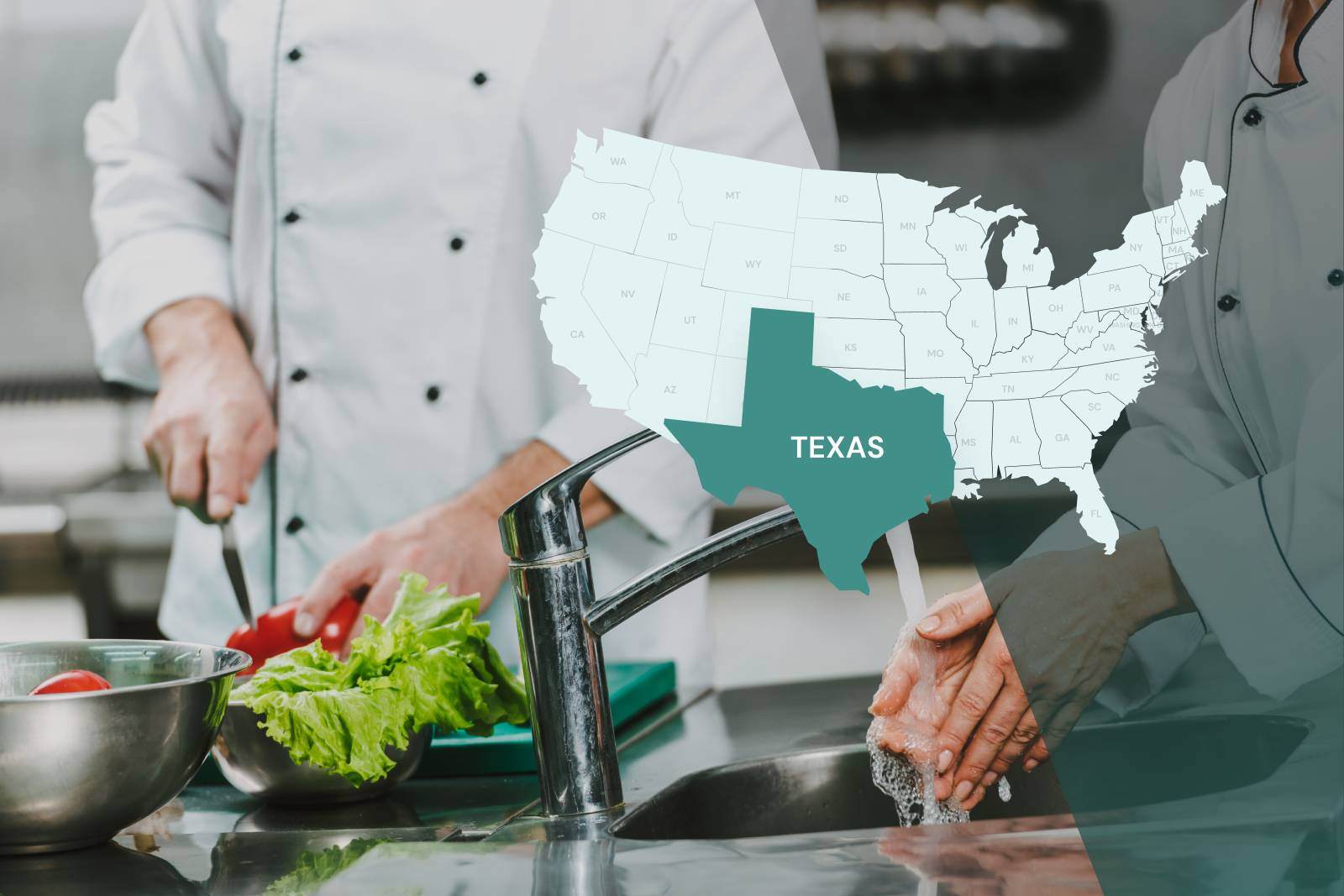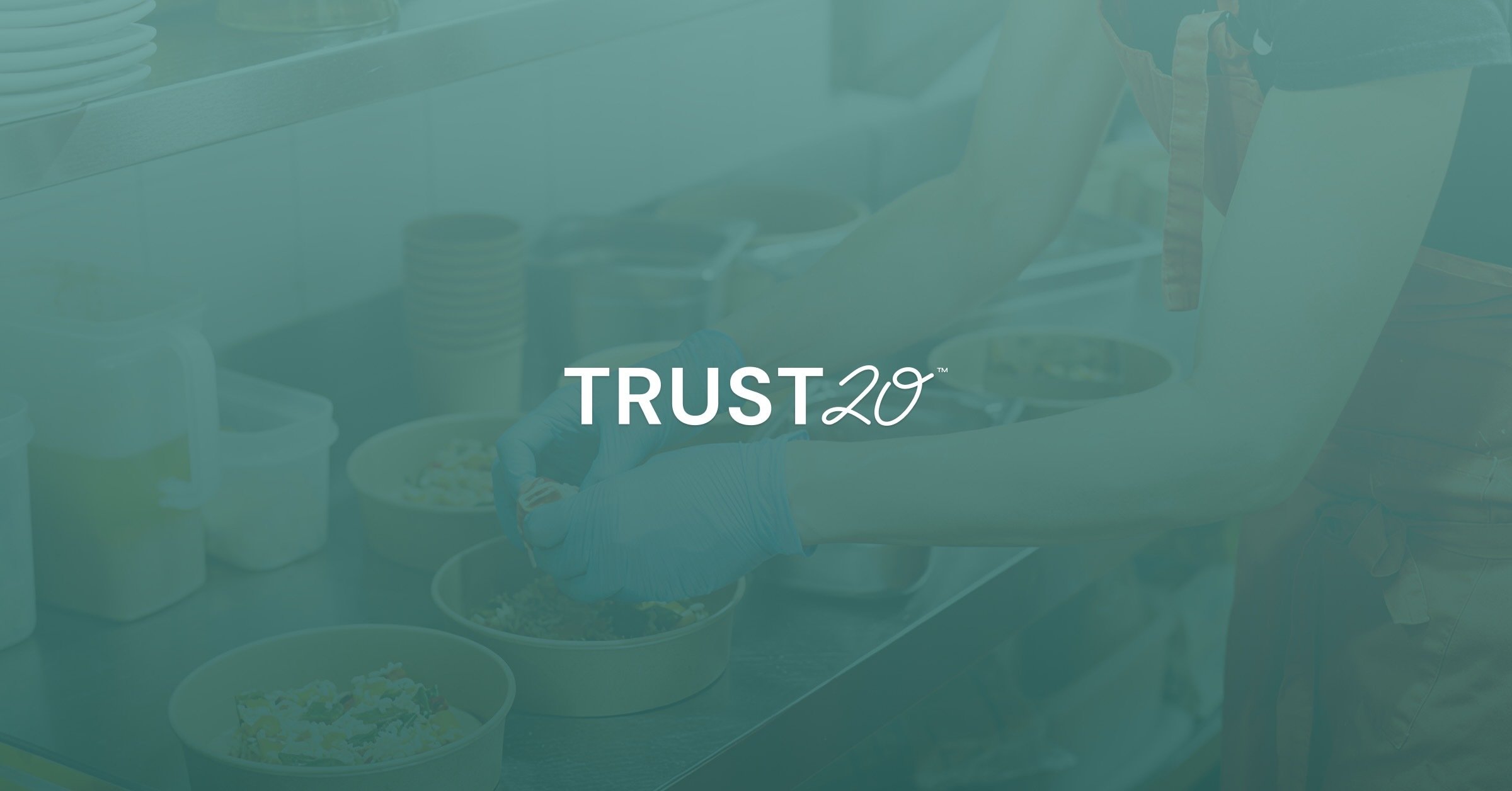The Lone Star State is the second-most populated state in the nation, meaning there are many mouths to feed–and people to protect from foodborne illness outbreaks.
Thankfully, Texas regulators take public health seriously and work to mitigate food safety risks by requiring food safety training. Statewide training requirements in Texas are clear and consistent–which isn’t always the case!
Certain growing cities, like Houston and Austin, have even adjusted their requirements to better serve an increasing population. Read on to learn about Texas’ food safety training requirements and the administrative steps you need to take to stay compliant. No one wants to delay a start date or pay a fine because of red tape!
This article will answer:
Which version of the FDA Food Code does Texas use?
Does Texas require food handler training?
Does Texas require food allergy training?
Does Texas require food manager certification?
How are Houston’s requirements different?
How have Austin’s regulations changed?
The risks of foodborne illness
Foodborne illness is a significant public health challenge, affecting roughly one in six Americans (48 million people) each year. Contaminated food can harbor harmful pathogens like E. coli, Salmonella, and Listeria, which can cause severe health consequences, including hospitalization and in rare cases, fatalities (around 3,000 each year).
These illnesses not only jeopardize individual well-being, but also strain public health resources and damage trust in the food industry.
Because of this, educating the public on foodborne illness outbreaks (and safe food practices to prevent them) is key. There are countless resources to learn more about how to prevent foodborne illness and what to do after one has occurred, whether that’s in the home or in establishments like restaurants and schools.
Which version of the FDA Food Code does Texas use?
The U.S. Food and Drug Administration (FDA) Food Code is a constantly evolving, comprehensive set of food safety standards. Individual states and local jurisdictions are free to adopt, tweak, adapt, and/or develop their own regulations.
In 2021, the Department of State Health Services (DSHS) saw to it that the regulations from the 2017 FDA Food Code became integrated into the Texas Health and Safety Code, as well as the Texas Administrative Code.1, 2
Let’s look at the specific requirements regarding food handlers, allergen awareness, and food managers in Texas.
Does Texas require food handler training?
Yes, Texas requires all food workers, except the certified food protection manager, to complete accredited food handler training within 30 days of employment.3 Courses must be accredited by the ANSI National Accreditation Board (ANAB), formerly referred to simply as the American National Standards Institute (ANSI).
The Texas Health and Safety Code defines a food worker as someone who works with unpackaged food, equipment, utensils, or food-contact surfaces. Texas food handlers must also learn about the requirements for bare-hand contact with ready-to-eat foods.
Food handler training is very accessible in Texas. You can choose an accredited in-person or online course from a private provider (like Trust20’s Food Handler Certificate Training) or a classroom option from the state.
Upon successful completion of your training, you will receive a food handler card or certification (note: accredited courses require a passing score on an assessment to complete the program).
Texas food handler cards are valid for two years (though if your certificate expires before that, you will need to renew your credentials). You must provide a copy of your food handler card or certificate to your manager so they can keep it on-premise and available upon the health department's request.
Note: Texas regulations allow individual establishments to offer non-accredited food handler courses to their staff. However, this training does not have statewide reciprocity, and you will need to receive other training if you ever start working for a different establishment.4
Does Texas require food allergy training?
Texas does not require food workers to take a food allergy training course. However, the Texas Health and Safety Code does require food allergen awareness to be a part of all food handler training courses and food manager certification programs.3
The state also has legislation through the Texas Education Code (TEC) for food allergen awareness training for school workers.5
Does Texas require food manager certification?
Yes, at least one person with supervisory and management responsibility must earn a food protection manager certification. If an establishment is in a county with a population of at least four million people, a certified food manager may be required to be present at the food establishment during all hours of operation.9
You can earn your food manager certification by passing a DSHS-approved exam or an exam, like Trust20’s Food Protection Manager Certification, accredited by ANAB and the Conference for Food Protection (CFP). Food protection manager credentials are valid for five years.6
An original copy of a manager’s certification must be posted in the establishment where customers can easily see their credentials.
For anyone new to the industry or needing education to help pass a food protection manager certification exam, some providers offer training courses. Approved training courses must be 14 hours long for initial certification and six hours for recertification.
City, county, and other local health departments must accept the credentials issued for passing an approved, accredited exam as meeting the testing and training requirements of the Texas Health and Safety Code.9
Note: Establishments that only handle prepackaged food and do not package their own food, do not handle exposed Time/Temperature Control for Safety (TCS) foods, and temporary food service establishments are exempt from the Texas certification requirements.
How are Houston’s requirements different?
Like many large cities, Houston legislators incorporate additional food safety regulations into the local food code. The city’s requirements generally align with the rest of the state's food handler training and food manager certification requirements.
However, once you have earned a certification from an ANAB-CFP provider or the State of Texas, you must obtain a City of Houston Food Service Manager’s Certification by completing an application to confirm reciprocity.7
How have Austin’s regulations changed?
The regulations for Austinites have gotten more simple!
Food handlers must still obtain ANAB-accredited or State of Texas-approved food handler certificates, and managers still require certification. However, neither group needs to register their course completion with the City of Austin.
Rather than putting responsibility on individuals, operators are responsible for ensuring their establishment’s staff receive regular training and documenting the training record for each team member.8
The Takeaway
Texas has clear statewide training and certification requirements that help ensure food safety. Cities like Houston and Austin remind us how the rules can vary by local health jurisdiction. Overall, Texas regulators set an excellent example for leaders in other states for how to prioritize public health through food safety training and certification requirements.
Sources






.png)

.png)
